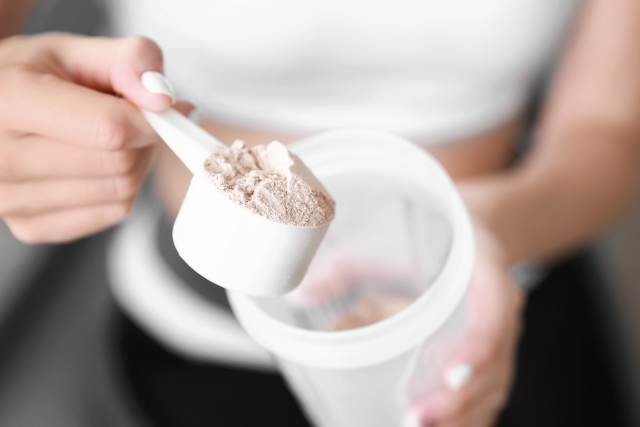By Jeremy Xiong
In the previous blog, we’ve discussed the dangers of eating too much salt. Today, we are going to analyze the 5 ways to reduce sodium.
1. LOWER THE CONSUMPTION OF SODIUM CHLORIDE
Studies demonstrate that a one-quarter reduction in the sodium content of sliced white bread can be delivered largely unnoticed. The reduction was achieved without clearly affecting the participants' perception of the flavor strength of the bread, or their liking of the bread, and might, therefore, be appropriate for widespread implementation in the population[1].
A gradual salt reduction was more effective than abrupt salt reduction for maintaining acceptability during the salt reduction process[2]。
The most successful strategy of reducing the population intake of NaCl is based around stealth reduction methods which refers to a gradual reduction of salt in processed foods. It has the benefit of not requiring any behavior change from consumers, which is traditionally difficult to achieve[3].
2. POTASSIUM CHLORIDE AND ITS MIXTURE
The non-sodium salty substance is commonly used to substitute NaCl. Potassium chloride is the most chemically similar to NaCl and hence the obvious choice for NaCl replacement. Although it is not as salty as the sodium. For healthy people, consuming appropriate potassium is not harmful but beneficial, therefore potassium is widely used in low-sodium salt. However, high concentration of potassium creates bitter taste and can be deadly, which limit the amount of dosage that potassium chloride added to foods. Generally, the low-sodium salt contains 25% potassium chloride or less, and the saltiness tastes different in different foods.
Nowadays, various types of salt substitutes have been applied in the food manufacturing industry, such as potassium salt, magnesium salt, calcium salt, potassium lactate, calcium citrate, etc. These salt substitutes are similar to the table salt in some properties, which allow them to partially replace table salt.
3. OPTIMIZE THE PHYSICAL FORM OF SALT
The saltiness of table salt is related to its size, density, and surface area. The more it can be dissolved, the easier it can be perceived by gustatory receptors. Granulated salt is commonly used in the food manufacturing industry, and flake salt is now used in meat products as well. Flake salt has a larger surface area and is easier to dissolve, which greatly improves the texture, flavor, sensory characteristic of foods. The granular size affects the salt taste receptors, the smaller the granular size is, the faster it dissolves in your mouth, the stronger the saltiness can be perceived. As table salt will finally dissolve in foods, the flake salt has a limited application in the food manufacturing industry.
4. FLAVOR ENHANCER
When decreasing the salt substitutes and table salts, the flavor of foods will be reduced and off-notes will be increased. Therefore, flavor enhancers are often applied with low-sodium technologies to intensify the gustatory sensation, and make up for the loss of flavor. The main mechanism is to activate the taste receptor on the tongue as well as to mask and compensate for the loss of saltiness caused by the reduction of sodium.
At present, the main flavor enhancers are amino acid, nucleotide, lactate, Angel yeast extract, etc. The commonly-used amino acids include glutamate sodium, lysine, glycine, histidine, succinic acid, etc. The commonly-used nucleotides include AMP, IMP, GMP, etc.
Studies have found that adding KCl to replace 50% salt brings bitter taste in fermented sausage. After adding flavor enhancer: 1% lysine, 0.03% disodium inosinate(IMP), 0.03% disodium guanylate(GMP), or 0.03% lysine, 0.075% taurine, 0.03% disodium inosinate(IMP), 0.03% disodium guanylate(GMP), the bitterness of KCl disappears. It is found that l-malic acid, succinic acid, citric acid, fumaric acid and other organic acidity agents work great to increase saltiness and mask bitterness. Particularly, the compound solution adding 1. 6% l-malic acid brings natural saltiness and a more rounded Hou-feel/mouthfulness.
5. YEAST EXTRACT
Angel Yeast Extract features an abundance of rich peptides. Those savory peptides can reduce and mask the unpleasant notes, and make up for the bitterness and metallic taste caused by adding KCl in low-sodium salt.
Angel Yeast Extract, rich in glutamic acids, amino acids, nucleotides, peptides, can magnify the sodium ion responses and the savory taste receptors on the tongue. By adding it, the reduction of NaCl consumption in low-sodium salt will not decrease the gustatory sensation in foods. As an example, adding 0.5% Angel yeast extract to replace NaCl in Mexican chili beef has been well accepted by consumers, it does not affect the savory flavor but contributes to reducing sodium.
Experimental results demonstrate that adding more than 0.4% Angel Yeast Extract to 0.8% NaCl solution can significantly improve the salty taste. When adding 0.8%, the mouthfeel of saltiness is equivalent to 1. 1% NaCl solution, it means the salt consumption has been cut by 27%.
The mixture of the above two ingredients can not only enhance the salty taste by reducing salt consumption but also boost the balanced taste profile and Hou-feel/mouthfulness. Delivering a well-rounded gustatory experience.
References:
[1] Girgis S , Neal B , Prescott J , et al. A one-quarter reduction in the salt content of bread can be made without detection[J]. European Journal of Clinical Nutrition, 2003, 57(4):616-620.
[2] A longitudinal comparison of two salt reduction strategies: Acceptability of a low sodium food depends on the consumer.(Nuala Bobowski, Aaron Rendahl, Zata Vickers)
[3] Reducing Sodium in Foods: The Effect on Flavor(Djin Gie Liem, Fatemeh Miremadi and Russell S.J. Keast)
About Angel Yeast Extract-Savoury:
Angel YE (yeast extract) made from edible yeast, by degradation the protein and nucleic acid in the yeast cells into nutritional seasonings with the application of modern biotechnology, has the advantages of increasing the fresh flavor, reducing salt, balancing the odor, strong tolerance and food properties, which promotes the global healthy operation of salt reduction and "clean label ".
About Angel:
Angel Yeast Company is a high-tech listed company specializing in yeast and biotech. Product business covers Yeast and Baking, Yeast Extract-Savoury, Nutrition & Health and Biotechnology fields. It is one of the world's leading companies in the yeast industry. Angel has 12 holding subsidiaries and provides products and services for more than 150 countries and regions.
http://en.angelyeast.com/
Press Contact:
ANGEL YEAST CO.,LTD
Address: 168 Chengdong Avenue, Yichang, Hubei 443003, P. R.China
Tel: +86-717-6369520, 6369558
Fax: +86-717-6370680
Email: aie@angelyeast.com




